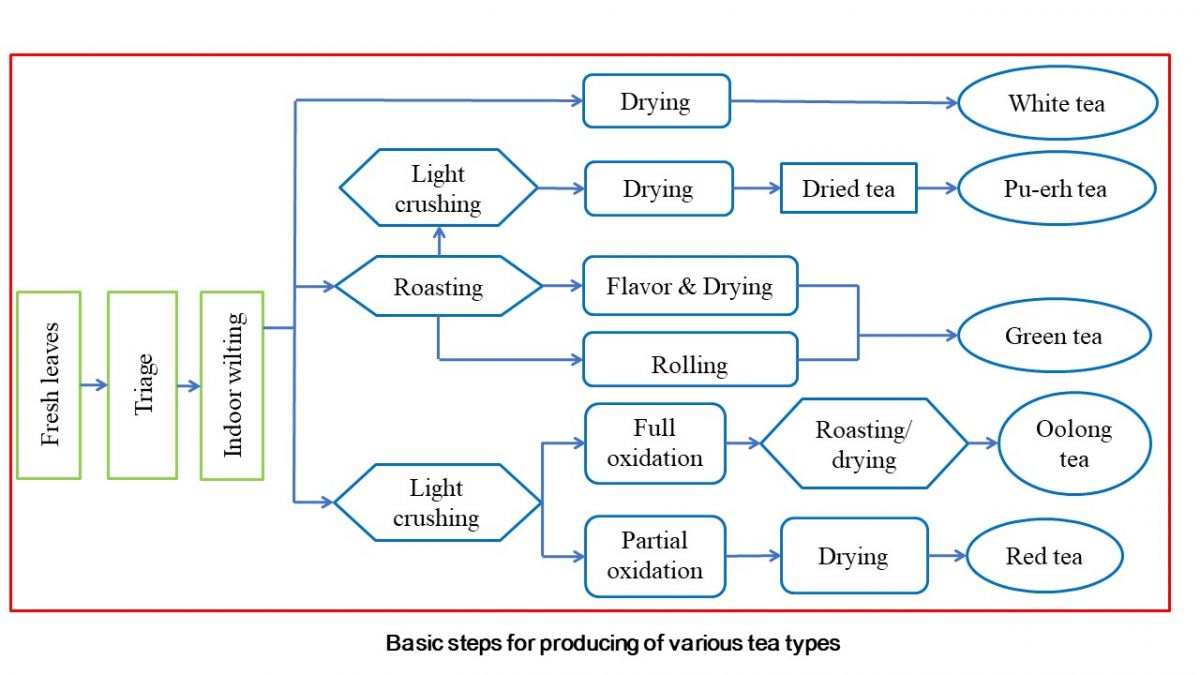APA 6th ed. ຊາປ່າ / Wild Tea. (2019, July 23). Retrieved from https://www.phakhaolao.la/kb/0000477
MLA 8th ed. ຊາປ່າ / Wild Tea. Pha Khao Lao, 23 July 2019, https://www.phakhaolao.la/kb/0000477.
Chicago 17th ed. Pha Khao Lao. 2019. "ຊາປ່າ / Wild Tea." Published July 23, 2019. https://www.phakhaolao.la/kb/0000477.
Processing
Different types of tea are processed in different ways, as shown in the diagrams. There are six types of tea, depending on the level of oxidation: white, green yellow, oolong, black and pu-erh. First any dirt is removed from the leaves. Then they are left in a windy place to wilt before processing according to the type required. In general, after processing the leaves are graded before packaging and selling. The detailed technique for processing depends on the experience and methods of each processing company or farmer. Hence the quality will also be different for each.

Dried tea or maocha is the semi-finished product used to make pu-erh tea. In general, there are four main steps in tea processing: (1) Young green tea leaves (1 shoot tip with 2 leaves) are harvested and then wilted in a windy place to evaporate water. This ensures that the leaves don’t break when rolled. (2) Leaves are cooked until they roll together. Traditionally, the leaves were then rolled but today processors prefer not to use this step. (3) The roasted leaves are dried in the sun until moisture content is less than 5%. (4) Any dirt is removed, then the leaves are stored in a place with good air flow and free from food odors or other odors.
Green tea: The technique for processing green tea is similar to that for the production of dried tea or maocha. The most important difference is that green tea is rolled before being roasted again. Four steps are important: (1) Harvest fresh leaves (1 shoot tip with 2 leaves) then dry in a windy place. (2) Roast the leaves for about 10–15 minutes. (3) Roll by hand or machine for 10 minutes. (4) Roast the rolled leaves again for 3–4 hours until really dry, with moisture content less than 5%. Checked for impurities and store in good air flow and away from food odors.
Red tea: Harvest fresh leaves (1 top with 2 leaves) during the morning, then dry in the open air until the next morning. Roll by hand or by machine for 15–20 minutes. Cure in an air-tight bag for about 30–45 minutes (the curing period will depend on ambient temperature and humidity) until the tea changes color to bronze with light red. Finally, dry again in sunshine or by machine until fully dried.
